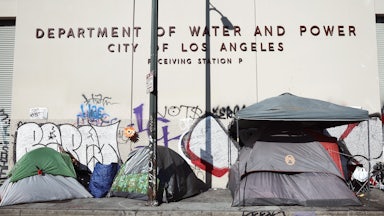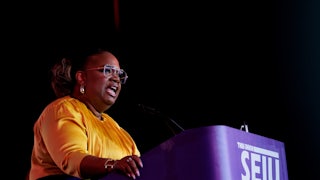Common wisdom has it that the best long-term investment vehicle is the humble index fund, which rises and falls with the stock market. “I’ve often been asked for investment advice,” Warren Buffett wrote in his 2017 letter to Berkshire Hathaway shareholders. “My regular recommendation has been a low-cost S&P 500 index fund.” According to CNBC, roughly 80 percent of all actively managed mutual funds last year lagged the S&P Composite 1500, an index fund that covers 90 percent of all market capitalization. Active large-cap funds performed even worse; 85 percent lagged the S&P 500, marking their twelfth consecutive year of underperformance.
But I’ve discovered an even safer investment vehicle. There are still a few kinks to work out about how to divide it into shares that can be bought and sold on the open market. But it’s worth the effort, because since 1978 this investment has outperformed the stock market by 37 percent.
I am speaking, collectively, of the compensation packages of the chief executive officers of the country’s largest corporations.
Defenders of outrageous CEO pay often justify it as a mere reflection of rising corporate profits. It’s incentive pay! Critics of outrageous CEO pay often answer that the game is rigged because CEO pay packages rise in tandem with the overall stock market much more than they do from any performance improvement in a CEO’s particular company. Greater transparency about executive pay packages has actually made this tendency worse because CEOs now demand, petulantly, to keep up with a “peer group” cherry-picked to maximize their compensation. As a consequence, CEO pay since the late 1970s has grown more than twice as fast as pay for the median worker. The result has been spiraling growth in income inequality and wealth accumulation rivaling that of the Gilded Age.
But it turns out those critics weren’t being critical enough. Now it’s time to revise their analysis. CEO pay no longer rises with the stock market; it rises well in excess of the stock market—more than one-third faster, according to a new report by Economic Policy Institute, or EPI, research director Josh Bivens and research assistant Jori Kandra. It’s still true that a typical pay package for the CEO of a major corporation outperforms whatever company the CEO happens to run. But in addition to that, it outperforms the entire frigging stock market. You want to keep your retirement money safe? Sure, an index fund is a fine investment for now. But once we figure out how to corral America’s top CEOs into an initial public offering and convert their collective persons into stock, pull your money out of that index fund and put it into CEOs, Inc. You won’t be sorry.
That isn’t the first time EPI has reported that capitalists outearn capital. It’s found CEO pay exceeding stock market growth for several years now. But we’ve all become so inured to outrageous stories about CEO pay that this finding didn’t attract much attention. I didn’t notice it until this past week. The concept so astonished me that I checked EPI’s math. From 1978 to 2021, realized CEO compensation increased, EPI says, by 1,460.2 percent, adjusted for inflation. How does that compare to stock market performance? Well, from January 1978 to January 2021, the Dow Jones Industrial Average rose, adjusted for inflation (and assuming no dividend reinvestment) by 842.814 percent. The S&P 500 rose 904.378 percent. These rates of growth are impressive, but they are much slower than 1,460 percent.
Thomas Piketty shocked the world by suggesting that r > g, where r is capital accumulation and g is economic growth. EPI’s contribution is that c > r, where c is CEO compensation and r is capital accumulation. Capital good; capitalist better.
A very long time ago, in 1992, Democratic presidential candidate Bill Clinton proposed limiting CEO pay by capping at $1 million the amount of CEO salary that a corporation could deduct from its taxes. As the corporate governance expert Nell Minow explained to me a decade ago, Congress legislated the change in 1993, and then three things happened. The first was that every CEO in America got his salary raised to $1 million. The second was that corporate compensation committees, which remained determined to shower money on their top executives, invented a lot of make-believe performance metrics like making the company a “fun” place to work. (That was a real metric for Dennis Bakke, CEO of AES Corp., a utility company whose rise was linked somehow to Enron; after Enron tanked in 2001, AES stopped being fun, and Bakke resigned.) The third thing that happened was that corporations started compensating CEOs more and more through stock options. The corporations claimed, preposterously, that they didn’t have to put these stock options on their balance sheets because those options had no known value until such time as they were realized. (Great, Nell replied. They’re worthless? Then give me some!) This new off-the-books method of paying CEOs caused CEO compensation to rise even faster than before.
After Enron crashed, regulators made corporations put the stock option awards on their balance sheets, and in 2017, as part of an otherwise mostly regressive package of corporate and other tax cuts proposed by President Donald Trump, Congress established that the deductibility of CEO compensation would henceforth be capped at $1 million—including stock options. For the first time, corporations would have to pay a tax penalty every time they threw more than $1 million annually at their CEOs. The 2017 law also applied the new limit to a few other top corporate executives. The 2021 American Rescue Act expanded further the number of corporate executives affected, since million-dollar salaries become less unusual with every passing day.
Clinton’s reform has finally been enacted as intended. It doesn’t matter.
Like drunken sailors, corporations just kept throwing money at the C-suite. A tax intended to inhibit the rise in corporate pay became, instead, a pretty swell source of government revenue, with three dozen companies in the S&P 500 forking over more than $2 billion over three years. Tesla paid $447 during the same period. Why did these corporations sneer at this law that was supposed to rein in their excesses? An executive pay consultant told The Wall Street Journal in July that the tax was “a drop in the bucket.” One reason is that the same 2017 law that finally put stock options under the pay cap also cut the top corporate tax rate from 35 percent to 21 percent.
Many people, including myself, have reported that out-of-control corporate pay is driving the rise of top incomes, a group popularly known as the 1 percent (income floor: about $800,000). But if you really want to eyeball America’s plutocrat class, look instead at the top 0.1 percent (income floor: about $3 million). This group’s incomes are rising twice as fast as incomes for those poseurs in the top 1 percent. Incomes for the top 0.1 percent have grown, after inflation, 385 percent since 1978. Hear them roar.
But EPI’s latest report demonstrates that CEOs make even this plutocratic 0.1 percent look like poseurs. As a group, CEOs get paid nearly seven times as much as the 0.1 percent, and their pay is rising at a rate that’s nearly four times as fast. As Bivens and Kandra point out, it’s a serious insult to the 0.1 percent to suggest that higher and faster-growing pay for CEOs is even vaguely meritocratic. You want to tell a guy earning $3 million bucks a year that he is mediocre compared to a CEO, be my guest.
“The growing pay differential between CEOs and top 0.1 percent earners,” Bivens and Kandra write,
does not reflect the greater productivity of executives but the specific power of CEOs to extract concessions—a power that stems from dysfunctional systems of corporate governance in the United States. Because so much of CEOs’ income constitutes economic rent, there would be no adverse impact on the economy’s output or on employment if CEOs earned less or were taxed more.
Amen. I would add only that much the same can be said of the plutocratic top 0.1 percent relative to the merely rich top 1 percent, or the top 1 percent relative to the haut bourgeois top 5 percent. Let’s give each of these groups its own tax bracket, rising as you climb ever higher in the income distribution, and beginning well above the current top marginal rate of 37 percent.
If we can’t do that, I’ll resume work starting a CEO index fund so elderly pensioners can get a piece of CEO rent-seeking. Anybody out there know how to turn human capital into an IPO without running afoul of the Thirteenth Amendment? I welcome any suggestions.










